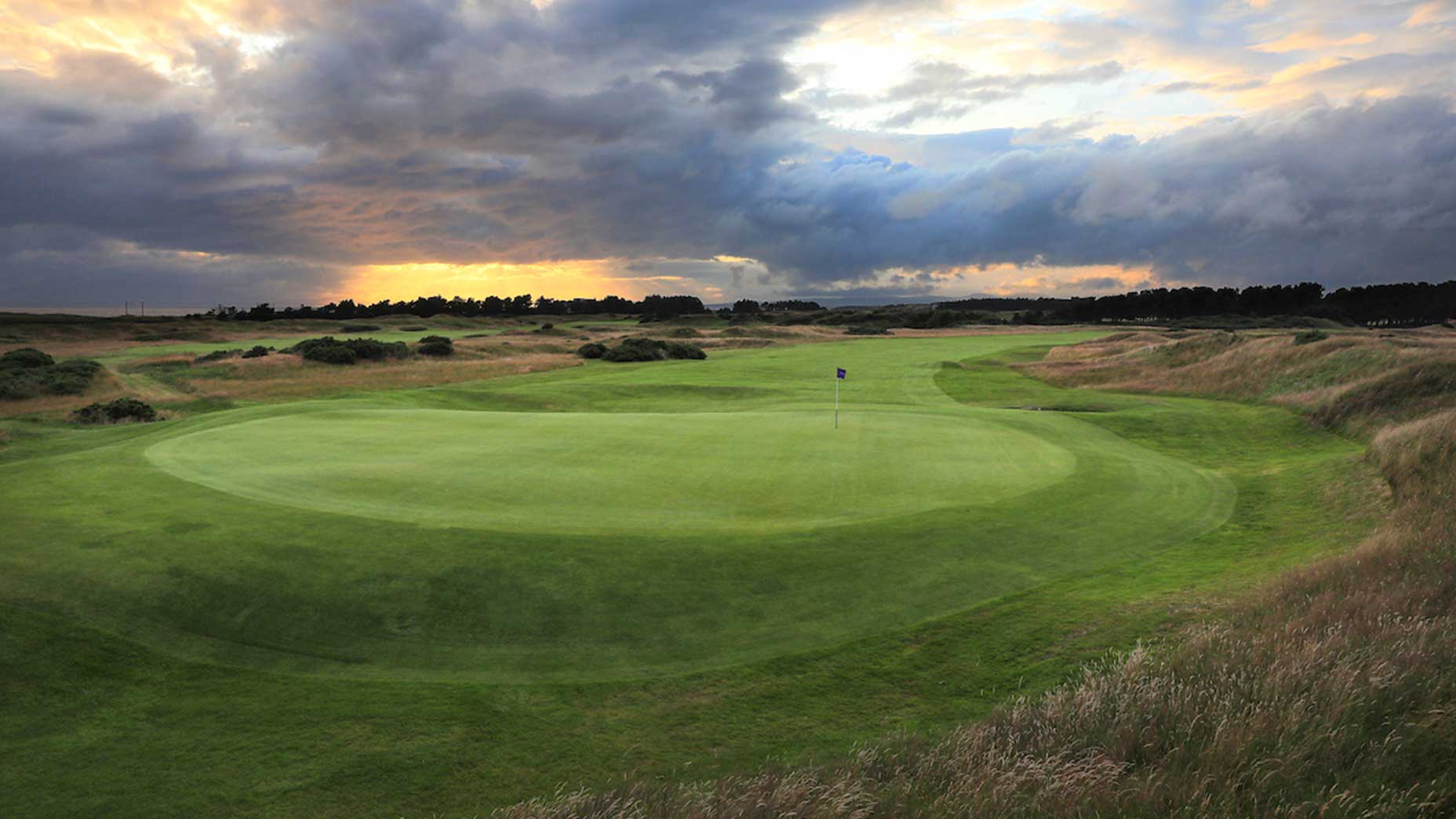Travel
Why Scotland’s Ayrshire Coast is a bucket-list stop for golfers

Prestwick Golf Club is just down the road from Royal Troon, host of the 2024 Open Championship.
Courtesy
It’s true that Royal Troon Golf Club is semi-private, which means visitors are granted access to a limited number of tee times at the historic links course, which next week plays host to the 152nd Open Championship. However, the club decidedly leans in the “private” direction, which is why avid golf travelers enthusiastically tee it up along the Firth of Clyde anytime they’re fortunate enough to secure entry onto those grounds.
Such stipulations help to explain how I found myself traversing those 18 holes in late March, still a few weeks before the golfing season formally began at the club. The mercury never rose past the upper 40s that day, while a stiff wind rushed in off the ocean, adding an extra chill to the air. The stout, three-club wind was a welcomed assist on the rare instances when those gusts blew at my back, but when the course’s routing turned me into the fan, short par-4s played as if they stretched 100 extra yards, while longer holes were even more imposing.
The shortest hole on the course — the shortest hole in all of Open Championship golf — was prominently affected, too. It was there on the 123-yard 8th hole, a par-3 famously known by a nickname bestowed by Willie Park Jr., in 1909, that I faced a stout headwind. Staring down the infamously narrow, “Postage Stamp” green — a putting surface less than 2,700 square feet in area and only 42 feet wide at its fattest point — I firmly struck an 8-iron and watched as the quartering wind began to move my high-arching shot away from the bulbous, fescue-covered dune flanking the left side of the green. As my Pro V1 began its decent, however, I realized that I had misjudged the wind’s lateral push. Moments later, my tee shot plummeted to its death. (They don’t call it the Coffin Bunker for nothing, you know.)
Even though Royal Troon stretches to almost 7,400 yards and this year will introduce the longest hole in Open Championship history — the par-5 6th was extended 22 yards and now measures more than one-third of a mile — the James Braid-designed classic still emphasizes accuracy over distance, especially given the likelihood that the course will play firm and fast this summer. That means many (maybe all) of the course’s treacherous pot bunkers are in play. Speaking of which… over the winter, eight members of the club’s grounds crew tediously rebuilt by hand 56 of those sand-filled hazards. With their new revetted faces, these bunkers represent an all-but-certain one-stroke penalty for golfers whose shots have the misfortune of venturing into them.

Courtesy
The advantage — if there is one when such imposing, steep-walled hazards are in play — is that most of Royal Troon’s bunkers, thanks to those revetted faces, are visible from afar. Such is not the case just a few miles down the road at Prestwick Golf Club, an Old Tom Morris creation steeped in history of its own. This is where the Open Championship was born back in 1851, and if you’re lucky enough to play here, you may find yourself paired with one of the club’s gregarious caddies. Shortly after telling me that he’s shouldered bags at Prestwick for several decades, my looper reveals the first of what seemed like an endless string of humorous golf expressions.
“That was what we call a mother-in-law,” he told me after I striped a drive on the 4th hole. “It looked good going away.”
Four holes later, as I prepared to hit my tee shot, my caddie informed me that I could not miss left. A trio of pot bunkers line that side of the fairway, I was told, but they’re undetectable from the tee box. I flushed my drive, but also pulled it slightly left. It was hard to know if that was a treacherous line, and my caddie was far from reassuring.
“We’ll have to wait and see,” he said.
A few minutes later, I had my answer. Nestled in one of those bunkers, my ball settled close enough to the edge that I needed two attempts to get out. Such are the perils that a round on a classic Scottish links course can introduce, and they’re one of the many allures that draw avid golfers across the pond every year.
A golfing getaway to Troon isn’t limited to just these two formidable courses, however. Three miles to the north, a modern classic, Dundonald Links, showcases the handiwork of course architect Kyle Phillips, who carved a 7,100-yard masterpiece into the Ayrshire coastal landscape only a few years after wowing critics on Scotland’s east coast with the opening of Kingsbarns Golf Links in 2000. A round at Dundonald delivers everything you’d expect from a classic links course, and a bit more. Players will encounter bold undulations, penal rough, plenty of gorse bushes and — in a twist — areas lined with mature pine trees.

Courtesy
Separated from Dundonald by a set of train tracks to the east, Western Gailes Golf Club is what many consider a hidden gem given some of the more prominent clubs in the area. The 7,014-yard routing heads both north and south, with half of its holes playing alongside the sea. It presents a dynamic landscape that will challenge players as they attempt to navigate its many contours.
“Nearly half the greens lie in saucers or bowls,” Frank Pennink writes of the club in his Golfer’s Companion. “But as many are full of subtle slopes that neutralize any advantage.”
Just as each of the aforementioned courses offer a unique experience and appeal, there are a handful of noteworthy hotels and resorts along this stretch of the Ayrshire coast that promise distinct experiences and memorable stays. With its red-brick façade starkly contrasted against the undulating 1st and 18th fairways of the Old Course at Royal Troon, the Marine Troon hotel prominently leads the way. The 89-room property opened its doors 130 years ago, but a recent renovation by AJ Capital & Partners transformed the establishment into a welcoming hotel with an ambiance and interior design aesthetic that reflects both Troon’s reputation as a seaside retreat and the hotel’s longstanding history.
Across the way, The Piersland House offers travelers an opportunity to step inside a trove of whisky history and lore, as the boutique hotel previously served as the private residence of Sir Alexander Walker, the grandson of Johnnie Walker. (Yes, that Johnnie Walker.)
And if a whisky-and-golf pairing tickles your fancy, Dundonald Links will likely entice you most of all. A couple of years ago the resort opened 18 luxuriously appointed lodges (a mixture of 2-, 4-, and 6-bedroom cabins), not to mention 22 hotel rooms and a new clubhouse. Those enhancements were a part of a £25 million renovation of the property, one that also created a striking (and well-stocked) whisky tasting room. It’s an ideal venue to celebrate a memorable day on the links — whichever course you’re lucky enough to play.










